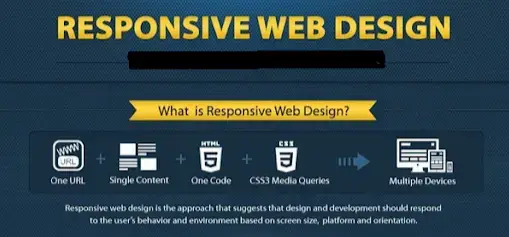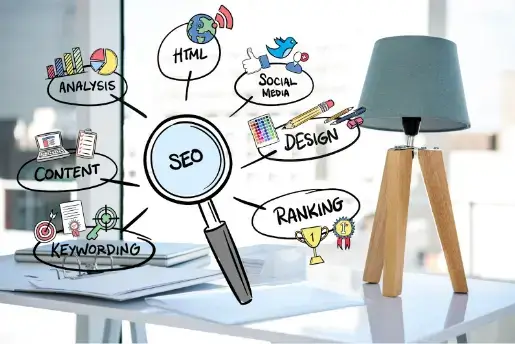Over the past few years, the world has seen astronomical growth in eCommerce businesses. Some experts now predict that by the year 2040, over 95% of all retail sales will take place online.
*Updated 02/27/2025
One platform trying to help businesses connect with their customers and take advantage of the surge in eCommerce transactions is Shopify.
Shopify is an eCommerce platform that provides business owners with the tools to open an online store and carry out transactions with their customers.
How to Drive Organic Traffic to Your Shopify Store
- Fix your Shopify store design
- Optimize your Shopify images
- Research for keywords
- Install Shopify SEO apps
- Increase your Shopify site speed
- Create quality SEO content
- Build quality links to your online store
- Take advantage of email marketing
Before we dig into the specifics of each of these, there is an important to answer before we get started on the list.
What is SEO?
SEO stands for Search Engine Optimization and refers to optimizing a website to become visible to search engines and website users, and is a critical piece for digital marketing success.
SEO strategies can help make your Shopify eCommerce store more noticeable and discoverable by those searching for your business.
Unfortunately, many eCommerce businesses struggle to attract traffic because they have neglected SEO in their marketing strategies. Below are ways to stand out and drive organic traffic to your Shopify store.
1. Fix your Shopify store design
The design of your Shopify store can make or break your eCommerce business. An ideal Shopify store design provides customers with an excellent user experience.

Your site’s structure is simply the way your website is designed. Websites have different pages, depending on the industry. ECommerce websites like Shopify have home pages, blog pages, category pages, product pages, and more.
While creating quality products and services, do not forget the design of your Shopify store. Many online shoppers consider a website’s design as important as the products and services it offers, so it’s an important stage of website development.
Some ways to optimize your Shopify shop design are:
- Use legible fonts—Researchers have discovered that fonts affect comprehension. It is vital to choose the right fonts to attract your audience to read your message and take some action. Legible fonts attract more traffic. Important messages written in poor fonts repel readers.
- Make it scalable—Making your eCommerce website scalable is developing a plan to handle the demands that come with the growth of your online business. Failure to optimize your website to handle customers’ demands will negatively affect your brand.
- Use a few links—While there are benefits to internal linking, do not overdo it. Reducing the number of internal links on a page increases the link juice on the page. According to Google, too many internal links on the same page decrease the value of the links.
- Build your website to be navigable—Imagine walking into a physical store and not being able to walk around and look at the products on display. The chances of you visiting that store again are slim. The easier for online shoppers to move around your Shopify store, the higher the chances of patronizing you again.
Although Shopify has an array of theme templates for you to choose from, it behooves you to go with the one that suits your brand best.
For example, the way you set up your product and category pages, and the type of content you create on your site, determine the amount of traffic you generate.
2. Optimize your Shopify images
Images are vital for eCommerce businesses. Studies have revealed that the effective use of images can help you drive traffic to your website.
Optimized images rank on search engines and do not hinder your site's performance. Un-optimized images can negatively affect the overall function of your website and create a bad browsing experience for shoppers.
Optimized images also help online shoppers and search engines understand the information on your website.
Here are ways to optimize your images.
- Use relevant keywords to identify your images
- Choose the correct image format
- Show different angles of your product image
- Decrease the image size
- Include Alt texts to your product images
3. Research for keywords

Keywords make it easier to connect with people searching for your products and services.
E-commerce businesses can benefit from keyword research by finding out the language their audience uses when looking for products and services.
But how can businesses know the keywords people use to search for products and services they offer? Several keyword research tools can reveal the popular words and phrases relevant to your business.
Some keywords are so competitive that you stand little chance of getting noticed when people search for those words.
Most SEO experts believe that small eCommerce businesses have a higher chance of ranking for keywords if they are long-tail keywords. Long-tail keywords are less competitive, have a higher conversion value, and attract more traffic to your online store.
4. Install Shopify SEO apps
E-commerce businesses use online applications to optimize the functionality of their websites and provide an excellent user experience for their customers.
There are different apps to choose from depending on what you want to achieve. If you choose the wrong application, you risk alienating a large proportion of your audience.
Fortunately for Shopify shop owners, there are tons of top Shopify apps designed to help you give your customers the best online shopping experience. The advantage of Shopify apps is that they have all you need for SEO best practices.
The Shopify SEO apps have features that can help you optimize your online store for the search engines and generate traffic.
Some Shopify apps can automatically identify and fix many SEO issues, so you do not have to perform them manually.
5. Increase your Shopify site speed
One factor used by Google to rank web pages is speed. A site’s speed is the measurement of how quickly a browser loads web pages from a site.

One study found that 47 percent of consumers expect a website to load in two seconds or less. Also, about 40 percent of people abandon a site that takes more than three seconds to load.
A fast-loading browser helps your site rank higher on search engines and increases traffic by providing an excellent user experience.
- Choose the correct theme—Websites do not look alike because they have different themes. Themes determine the aesthetics, color scheme, and fonts of a website. Website themes have codes and other computer languages that slow your browser down. If a particular theme affects your site, you can remove or uninstall some of its features.
- Manage your apps—Apps are necessary to improve the functionality and appearance of your Shopify store. Some apps come with installation codes that affect your online store’s performance. Once you notice an app is slowing down your browser, it is best to remove it if you can run your store without it.
- Use light images—Heavy images affect the speed of a website. There are image-compressing tools for optimizing images without compromising their quality.
6. Create quality SEO content

Creating regular quality content with valuable information is one of the best ways to drive traffic to your online store. Businesses use SEO-optimized content to create awareness about their brand, build authority, generate traffic, and increase sales.
Plus, an SEO content writer plays a crucial role in ensuring that the content is optimized for search engines, helping businesses rank higher, increase visibility, and reach a broader audience.
The amount of online content can be overwhelming. However, search engines display only the very best statistics, showing that most online users do not go past the first page of search engine results.
The implication is that websites that appear on the first page of search engines get most of the online traffic. If you want to generate traffic to your Shopify store, you must create content that can appear on the top pages of search engines.
AI writing and paraphrasing tools can assist in creating long-form content, sales, or even product description copy.
While creating quality content is good, more is needed. You must optimize all your quality content so the search engines can identify and rank them.
You may want to consider using localization testing tools. This will test the functionality of your app or website and assess the accuracy and suitability of any translations to ensure your content achieves the maximum impact.
Remember, your content will not be complete without a call to action. Content without a call to action is ineffective and will not generate the required customer engagement.
7. Build quality links to your online store
Another strategy guaranteed to drive traffic to your online store is to build links to your site. Link building involves getting other websites to link to your site.
Links are a major ranking factor for search engines. When you build a strong link profile to your website, you become visible on search engines, increasing traffic.
So how can eCommerce businesses build quality links to your online store? Building links to a website requires developing a backlinks search strategy. No one will link to your site without a conscious effort on your part to get them.
Below are some tips for acquiring quality links:
- Create quality content
- Link to other sites
- Do email marketing
- Write guest posts for other sites
- Request for links
8. Take advantage of email marketing

Email has remained one of the best customer communication platforms for many eCommerce businesses. An email is an excellent way to keep customers engaged with your business before and after a transaction.
Sending regular emails to your customers will keep them informed about your products and services, which will increase traffic.
Fortunately, Shopify has email templates to help you create and send the right messages to your customers at the right time.
Conclusion
Without attracting enough traffic to your Shopify store, you have little or no chance of generating leads and increasing sales.
So go ahead and implement the above SEO tips today and increase the organic traffic to your Shopify store.
Author Bio
Radina Skorcheva is a Digital Marketing Specialist at Inbound Blogging, specializing in Content marketing and SEO.
Radina is helping brands share their voices and scale their businesses through powerful digital marketing strategies. You can connect with her on LinkedIn.



